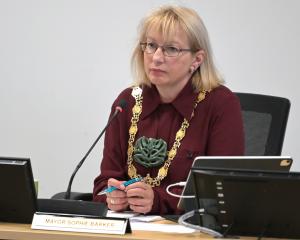Two and a-half years ago this newspaper called for an examination of the country's domestic violence response, the use of protection orders, their effectiveness and enforcement, and more work around inter-agency and transtasman information sharing.
We were not alone. Victims, their families, friends, advocacy groups, legal experts and the public had had enough.
That was in light of a spate of horrific - and preventable - cases of domestic violence. They included the deaths of Dunedin children Bradley (9) and Ellen (6) Livingstone in January 2014.
The children were shot dead by their father, Edward Livingstone, at the Ravensbourne home of their mother, Livingstone's estranged wife, Katharine Webb.
She managed to flee the house but could not save her children. Livingstone then turned the gun on himself.
At the time of the killings, Livingstone was subject to a protection order - supposedly in place to prevent him from contacting his wife and children and to keep them safe.
Not only that, it subsequently transpired he had twice breached the protection order. He was wrongly granted police diversion for the first breach, then discharged without conviction by a judge for the second - in part because he had no previous convictions.
It was later revealed he also had a historic Australian conviction for arson (of the house of his girlfriend who had just broken up with him).
A subsequent report by the Chief Coroner found that a vengeful Livingstone was ultimately responsible for the deaths, but multiple failings by agencies charged with protecting the children and their mother meant ''red flags'' were missed, and the full extent of the risk to the family went undetected.
Thankfully, progress is slowly but surely being made on fixing the systemic flaws that contributed to that and similar tragedies.
There is now better criminal history information sharing between New Zealand and Australia. Changes to legislation (including the Domestic Violence Act, Care of Children Act, Sentencing Act, Bail Act, Crimes Act, Criminal Procedure Act and the Evidence Act) and procedure have resulted in better communication between relevant agencies in this country, provided greater powers to those who need them, and ensured more accountability.
There are dozens of targeted police and government family violence initiatives and groups dedicated to improving the system and better protecting and supporting family violence victims. The work appears to be paying off.
This week Dunedin Women's Refuge manager Wenda Parata-Muir was reported as saying there was a noticeable change in police culture and other agencies' processes regarding family violence.
That in turn was likely to be behind an almost 36% increase in the number of offenders appearing in court on protection order breaches since 2014, when Bradley and Ellen were killed.
There is clearly less tolerance for domestic violence. Police are allocating more resources to the issue and taking a harder line.
Patterns of violent behaviour in a domestic setting are now better able to be picked up and that information shared. Judges therefore have a better chance of giving meaningful and preventive sentences which not only protect victims and reduce the potential for there to be more victims, but send a strong message to offenders, too.
There is a long way to go to stamp out domestic violence. There is still much to do to ensure equality and respect for women and to protect vulnerable children (for it is women and children who are largely the victims of domestic violence).
However, it is pleasing to see attitudes are changing and that is having a difference on the actions of some - even if at this stage it is largely those in authority.
However, it is progress in the right direction. Some good is finally coming out of such horror.












